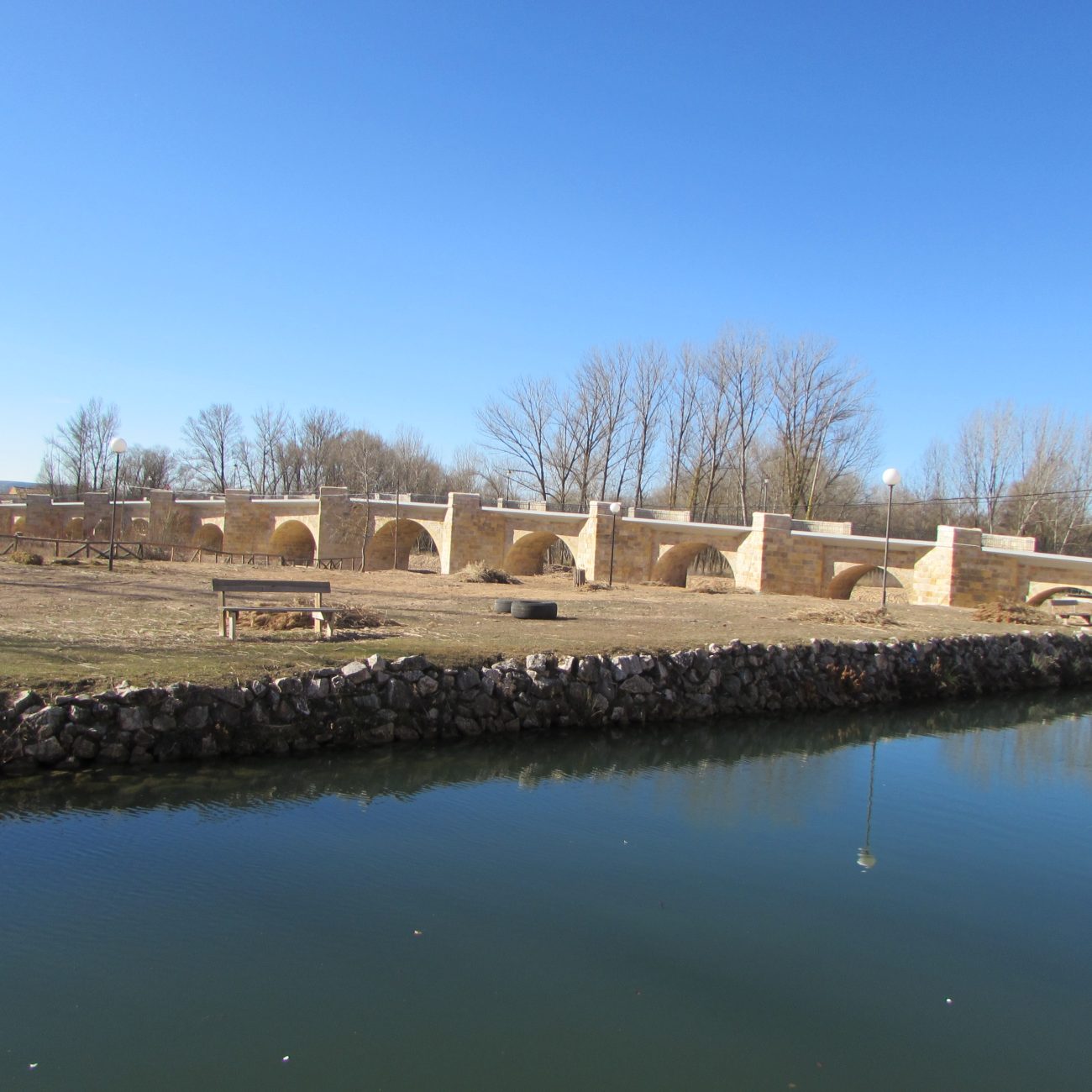For centuries, this large bridge has been the main entry point into the township of San Esteban de Gormaz. Throughout its service life, this iconic structure has carried a number of vehicles, from carts to cars and trucks transporting wood across the motorway N-110. Its presence has an influence on the character of the area and captures the significance of the township throughout history. The structure that we know today is a 16-span bridge with masonry arch barrels spanning Duero river with a wide riverbed that forks into two branches at this point. It is a humped bridge characterized by barrel vaults and different length spans. At roadway level, upstream and downstream cutwaters of piers provide pedestrian refuges. The current bridge is the result of a great number of interventions that have been performed since its construction until the early 20th century. The last significant intervention took place back in 1929, when the platform was widened by means of 6 to 8 m reinforced concrete cantilevers. The total length of the bridge is 200 m approximately.
The bridge was found to have functional deficiencies: the platform width was insufficient, retaining systems didn’t comply with the applicable regulations; significant global damage due to deterioration processes related to durability; severe problems arising from the bridge-riverbed interaction such as general scouring problems caused by the poor drainage capacity, and lastly, local problems related to structural failure, since many of the interventions performed in the past did not fully understand the structural behavior of these bridges.
Lastly, after conducting the relevant studies and consider a series of possibilities and solutions, the bridge original elevations were preserved, and the final width of the platform was thus 8 m. Current parapets were also preserved. It was decided that while a major extension and a modern retaining system would improve the bridge functionality and would ensure that the structure meets the requirements of the applicable regulations, it would totally alter its heritage value. Additionally, it was agreed with water catchment authorities that the intensity of the riverbed protection works would depend on the different problems and would be respectful towards the surroundings. Restoration works of the bridge masonry elements revealed the different construction details and the real value of this magnificent bridge.
